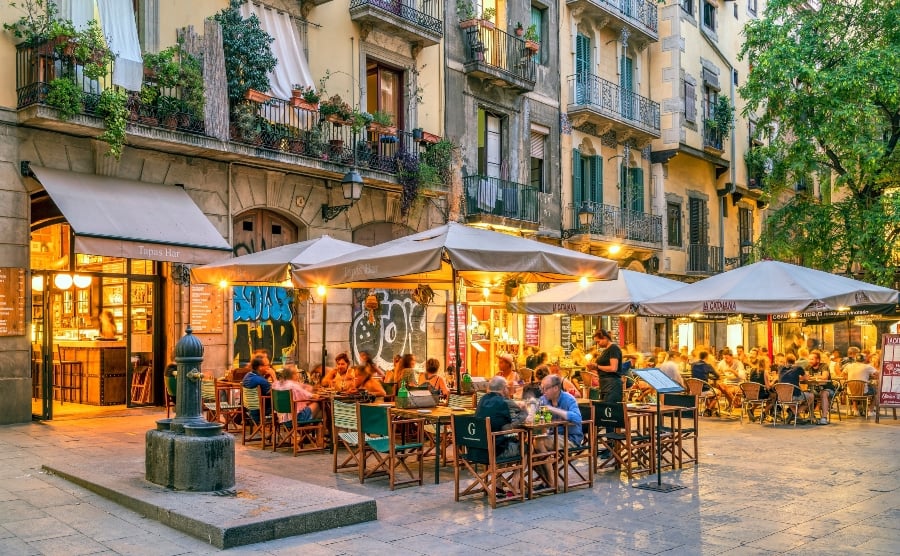Spain’s bold new food waste law takes effect this April, cracking down on excess and boosting food donations. As the country prepares for its Easter feasts, we look at how this shift will impact your supermarket shop, restaurant visits and home cooking – all while celebrating seasonal Spanish traditions.
An incredible 1.3 million tonnes of food is wasted and thrown out in Spain each year: that’s about 61 kilos per person! For some time now, the Spanish government has been working to significantly reduce this shocking amount of food waste and began last year with a draft law that came into effect on 1st April 2025.
Donating food
The main points are aimed at bars, restaurants and other hospitality businesses, which must now donate any food that is within the “best before” date to allow the country’s food banks and other charities to help feed vulnerable people. Food that is not suitable for humans must be donated to Spain’s agricultural sector as animal feed or to be used as biofuel and compost.
Some businesses are exempt: farms which have fewer than 50 workers, small restaurants and bars with less than 10 staff and those smaller than 1,300 square metres.
Spain: a country of “doggy bags”
The “doggy bag” is from now very much a part of Spain’s food scene, as it will be compulsory to offer customers recyclable containers to take uneaten food home. It is hoped that this will encourage less waste both at the restaurant and at home.

Teaching and informing
Another important inclusion in the new law is education. Expect to see articles and online space being used to help people create sensible shopping lists, learn to cook and to generally use food in a more efficient way.
Food storage is another important subject, as you can lengthen the life of foodstuffs by using the correct storage.
Best-before dates will also be mentioned, since people throw out perfectly edible items when not fully understanding the meaning of the label.
Good news for supermarket shoppers
We all like a good deal and now supermarkets will be required to offer more food close to the best-before date and “ugly” fruit and vegetables daily at cheaper prices. This is good for consumers and prevents unnecessary waste.
Small portions
Restaurants will need to produce more varied menus, allowing for the choice of just one course with no side dishes or smaller portions. Prices must be adjusted accordingly.
Establishments that do not comply will face heavy fines up to €60,000!
This is undoubtedly good news all round. Everyone will benefit: restaurants won’t be throwing out food and consumers will be able to save money, keep food for longer and choose smaller portions when dining out.
Establishments that do not comply will face heavy fines up to €60,000!
Whilst on the subject of food…
Easter is nearly here! During Easter, or Semana Santa, in Spain, traditional foods play a central role in family gatherings and religious celebrations. One of the most iconic Easter treats is Torrijas, a sweet dish similar to French toast. Made by soaking slices of stale bread in milk or wine, then dipping them in egg and frying them, torrijas are often finished with cinnamon and sugar. This dish has deep roots in Spanish cuisine and is especially popular during Lent and Easter as a way to use simple, humble ingredients during the period of religious fasting. It’s commonly found in homes, bakeries and even on restaurant menus throughout Holy Week.
Another beloved Easter specialty is potaje de vigilia, a traditional Lenten stew made without meat, reflecting the Catholic custom of abstaining from meat on Fridays and during Holy Week. This hearty dish features chickpeas, spinach and salted cod (bacalao), simmered together with garlic, onions and paprika. It’s a comforting and flavourful dish that reflects both the religious observance and the agricultural traditions of Spain. In addition to these, many regions have their own specialties, like monas de Pascua (decorated sweet breads or cakes) in Catalonia and Valencia, showing how Easter food in Spain is as diverse as its culture.
In addition to torrijas and potaje de vigilia, Easter in Spain is rich with regional delicacies that reflect both local ingredients and Catholic traditions. In Andalusia, for example, you might find pestiños – small pastries made from dough flavoured with sesame or anise, fried in olive oil, and coated with honey or sugar. These treats are especially popular in Seville during Holy Week processions and are often made at home using recipes passed down through generations. Similarly, in Castilla y León, hornazo is a savoury meat pie filled with pork loin, chorizo and hard-boiled eggs, traditionally eaten on Easter Monday after the fasting period has ended.
Across the Mediterranean coast, particularly in Catalonia and the Balearic Islands, the Mona de Pascua is a standout Easter dessert. Traditionally, these cakes were simple sweet breads topped with hard-boiled eggs, but modern versions have become elaborate creations decorated with chocolate figures, feathers and colourful candies. Godparents often give monas to their godchildren as a symbolic gift during the Easter celebration. The variety of these dishes – from simple to elaborate, sweet to savoury – showcases how food during Easter in Spain not only marks the end of Lent but also celebrates community, heritage and the joy of spring renewal.
You might also like:








